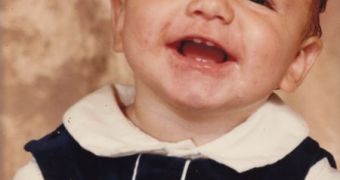Speaking to unborn children may be more important than once thought, scientists have recently revealed. They say that children appear to be learning how language works even when inside the womb. Naturally, they cannot talk immediately after they are born, as the vocal chords and the speech center of the brain need to develop first. But new studies suggest that newborns can understand language, in the sense that they cry in their native tongue even from their very first days. The trait is believed to be an evolutionary adaptation, LiveScience reports.
In the new investigation, the researchers looked at German and French babies. For grown-ups, the languages are completely different, with the former being more melodic, and the latter more rough. While an adult would hardly mistake one for the other, it could be expected of a child to do so. But, apparently, newborns are aware of the differences. The French children tend to cry in rising melody patterns, with slowly increasing pitches. This is completely in tune with the way the French language is spoken, the experts say.
Conversely, German newborns tend to cry in falling melody patterns, which is also in agreement with the way the language is used by adults. The only conclusion that can be drawn from this study is that the children learn at least the patterns on which their respective languages operate from the womb, even if they appear to be unresponsive to the outside world. Previous studies also add strength to the idea, which shows children prefer the voice of their mother over any other person's. This research analyzed the crying patterns of 30 German and 30 French babies.
“Newborns are probably highly motivated to imitate their mother's behavior in order to attract her and hence to foster bonding,” University of Wurzburg medical anthropologist Kathleen Wermke says. “Music and language might have co-evolved for a certain time during evolution and share a primordial form of communication system,” she adds. Details of the new investigation appear in the November 5 online issue of the scientific journal Current Biology.

 14 DAY TRIAL //
14 DAY TRIAL //